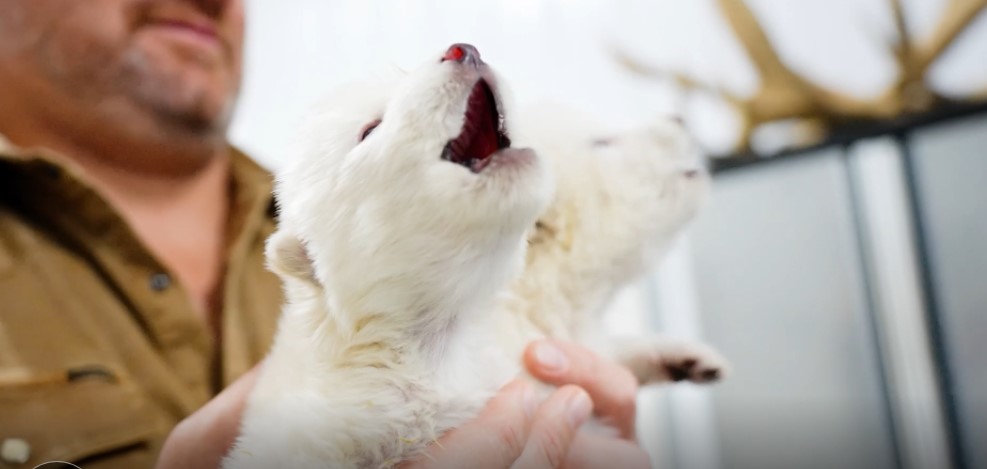
A long-extinct species has been partially revived through cutting-edge genetic engineering. A team of researchers at Colossal Biosciences, based in Dallas, has announced the successful creation of three canines bearing the distinctive physical traits of the prehistoric dire wolf (Aenocyon dirus), a species that vanished approximately 12,500 years ago.
This achievement was made possible by analyzing ancient DNA from two dire wolf fossils—a tooth estimated to be 13,000 years old and a skull dating back 72,000 years. By editing the genome of the gray wolf (Canis lupus), which shares approximately 99.5% of its DNA with the extinct species, scientists introduced specific traits believed to reflect the dire wolf’s original appearance. These include a broader head, stronger jaws, thicker fur, and a lighter coat.
The resulting animals are not exact genetic replicas of dire wolves, but rather functional hybrids that express many of their key physical characteristics. Researchers emphasize that their goal is not full genetic restoration, but rather the recreation of phenotypic traits—observable characteristics that reflect the essence of the extinct species.

The project involved isolating and editing 20 genetic variants across 14 genes using CRISPR technology. After cloning the edited cells and implanting the embryos into domestic dogs, scientists successfully produced two male pups born on October 1, 2024, and a female pup born on January 30, 2025.
These animals are being raised in a secure and expansive 2,000-acre facility, equipped with tall, reinforced fencing and advanced surveillance. Though socialized to tolerate human presence, the pups remain wary and display natural, skittish behaviors typical of wild canids. Researchers are closely observing their development to better understand the implications of gene editing, cloning, and behavioral traits in de-extinct animals.
The endeavor has prompted both scientific enthusiasm and debate. Experts note that while the animals are primarily gray wolves with edited traits, they represent a significant advancement in de-extinction science. As such, they offer insights not only into extinct species but also into future applications for conservation.
Colossal Biosciences has also applied similar techniques to the critically endangered red wolf (Canis rufus), successfully cloning individuals with the aim of increasing genetic diversity in small, threatened populations. Researchers suggest the technology could eventually assist in improving genetic health, correcting harmful mutations, and even equipping species to better adapt to changing environments.
However, concerns remain about the ecological role these hybrid animals might play. Some scientists argue that ecosystems once inhabited by extinct species have also changed or disappeared, making reintegration unlikely. Others question the ethics and utility of investing heavily in de-extinction while current conservation efforts for living species remain underfunded.
Nonetheless, many researchers acknowledge the careful steps taken to ensure animal welfare, including extensive oversight and the use of minimally invasive methods. The project, while still in its early stages, stands as a landmark in biotechnology and raises important questions about the boundaries of species revival, conservation, and scientific responsibility.
Sources: Colossal Biosciences, Center for Palaeogenetics (Stockholm University), University of Otago, University of Montana
